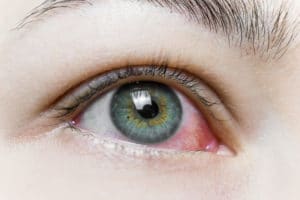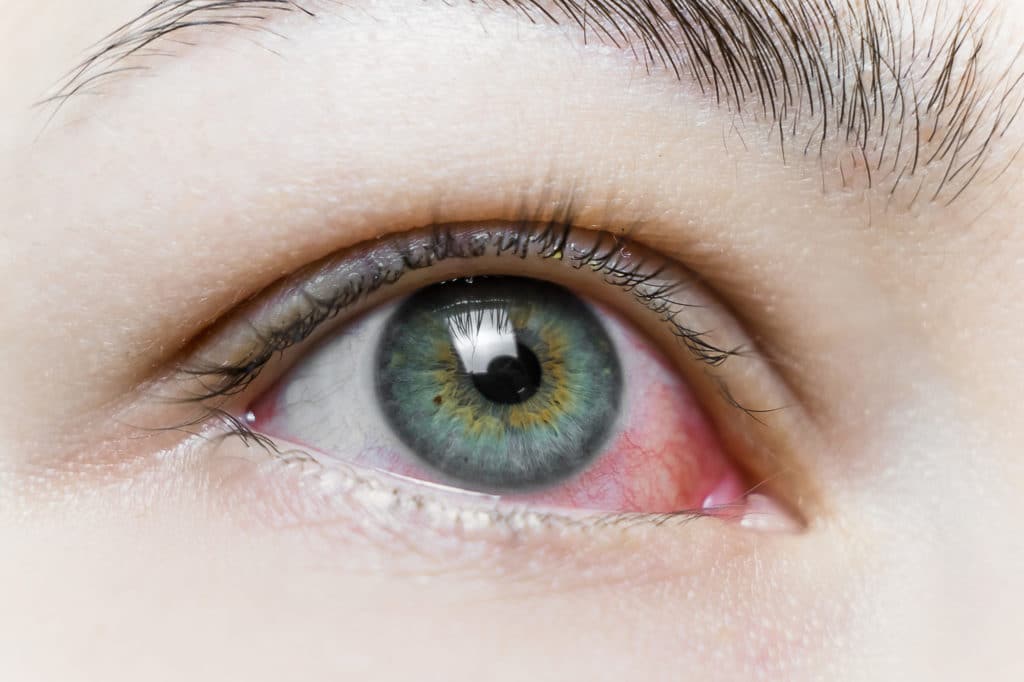
When a patient comes to the clinic with a pink eye, the eye care provider must determine the cause of the problem. The three leading causes of “pink eye” are viral, bacterial, and allergic. Each infection has its own characteristics and can vary in presentation.
Viral conjunctivitis (pink eye) usually starts in one eye and then transfers to the other eye after several days. Viral conjunctivitis is usually accompanied by an upper respiratory infection or a previous history of infection. The eyes present as injected (red), irritated, tearing with swollen lids. A viral infection, like the Coronavirus, can be contagious typically for up to 14 days. Sometimes it can last longer if the cornea is also infected. The treatment plan consists of artificial tears to keep the eyes lubricated, warm compresses to keep the lids clean and steroid or steroid/antibiotic combinations to control inflammation and possible secondary infections.
Bacterial infections of the eye also appear as “pink or red.” This type of infection usually affects one eye and is accompanied by a thicker discharge (purulent drainage) behind the eyelids. The invading bacteria can come from unclean contact lenses or contact lens case. It can be transferred from dirty fingers or contaminated eye drops. Bacterial infections are treated with antibiotics administered for seven to ten days. The patient is also told to discard any contacts, contact lens cases and makeup, as bacteria can accumulate on these objects.
The third cause of “pink eye” is from an allergic response. An allergen comes in contact with the eye. It then begins a release of histamines that cause the eye to become red and itchy. Itching is usually the main complaint with this type of conjunctivitis. Treatment includes the use of antihistamines and occasionally steroids. It is normally recommended that antihistamines be used during the whole allergy season and as needed after that. A steroid is used to control the inflammation and swelling that accompany allergic conjunctivitis. Steroid treatment is tapered off once the inflammation is gone. In addition to steroids and antihistamines, cold compresses are recommended to help reduce swelling.
Although pink eye isn’t always viral in nature, it is always recommended you see an eye care professional to evaluate and treat the problem. Also, keep good personal hygiene techniques in mind and protect yourself while the world is dealing with the Coronavirus.
Author: Theodore Hallberg, OD


